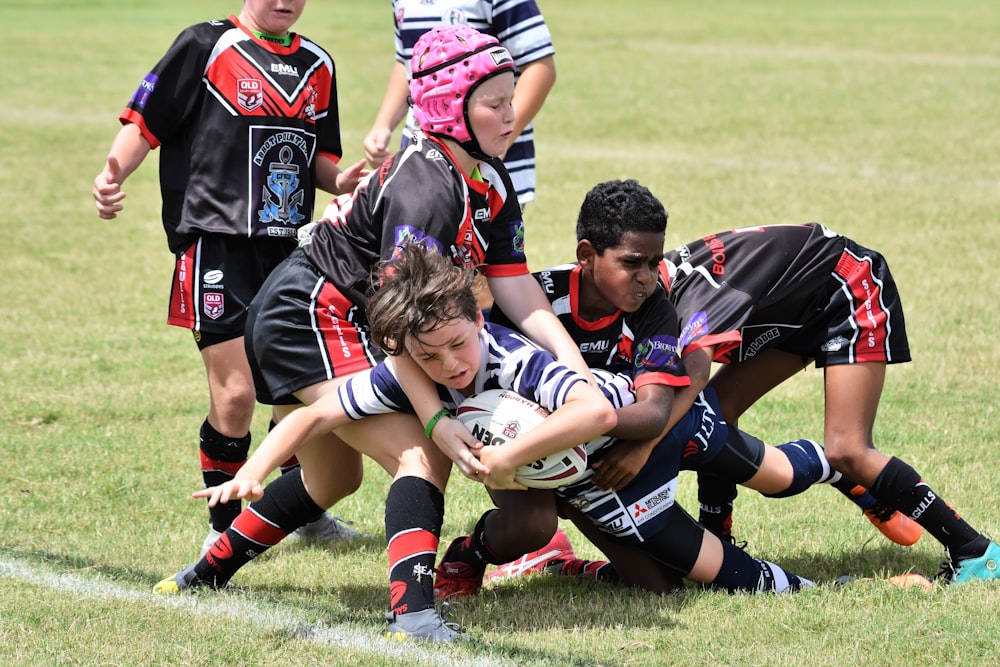Authored by the team ‘Three Degrees’: Tom Willett, Trevor Tiller, and Simon Ludford [E119 22J students].
This blog was written as part of a collaborative teamwork task by students studying E119. They had to select a topic and then decide on what roles each person would perform in the team, such as researcher, writer, editor, and leader. This blog was chosen as one of the best blogs from 27 blogs that were produced in January 2023.
There is nothing quite like a headed goal-line clearance; a player willing to put his head on any ball needed to keep a clean sheet and secure those three points. Following a game against Wolves, Neil Warnock famously said to his Sheffield United players ‘You’ve gotta die to get three points’, he did not mean it literally, but this is the unfortunate reality of heading in football. No job should be at the cost of a life, but sport seems to be the exception. We have had enough warnings and time.
In 1966, Football authorities were warned by doctors that frequently heading the ball could cause brain injuries. A club medic highlighted the issue as well as players complaining of headaches in a magazine (Seward, 2019). Research completed on the link between heading the ball and brain disease showed there is a fivefold increase in the risk of Alzheimer’s, a fourfold increase in motor neurone disease and a twofold in Parkinson’s (Seward, 2019). This shows that heading and brain Injury in football has been a long-term concern to medical staff.
A specific brain condition that footballers have suffered from is chronic traumatic encephalopathy (CTE); which is linked to repeated injuries or blows to the head and over time can lead to dementia (NHS, 2022). Former footballer Jeff Astle died in 2002 at 59 after suffering from CTE; an inquest following his death confirmed he died of dementia as a result of heading footballs; he was the first British footballer to have done so (Seward, 2019).
Given Astle’s death was 20 years ago, the time for action was long overdue. The repeated heading of the ball can lead to CTE and cause behavioural issues and death from dementia. National governing bodies have a responsibility and duty of care to protect their players. But what is actually been done?
A report from the Department of Digital, culture, media and sport (DCMS) does not make good reading. MP’s found a lack of engagement with the issue of concussion, despite the coroner’s verdict on Astle’s death (UK Parliament, 2021). The report also places blame on the HSE (Health and Safety Executive) and government for allowing unreliable sporting governing bodies to address the issue of brain injury within individual sports, referring to it as ‘marking your own homework’ (UK Parliament, 2021). The UK Government (2021) created an action plan to address the failings of player welfare, stating that the UK government, sporting governing bodies and medical professionals will work more closely together to educate and address any knowledge gaps as well as the usage of tech companies to monitor any impact and whilst this action plan is welcomed, is it 20 years too late?
These actions will take time to implement – time football players do not have. There is an urgent need to act, and act now. Technology is advanced enough to monitor ball size, pressure, weight, mass and water absorption and it is required by football governing bodies such as FIFA. Using this technology, Auger et al., (2020) studied the neurological impacts of heading a ball of different sizes, pressures, and how much water they had absorbed, this study was completed by kicking the balls at a force plate in a laboratory. The study concluded that lowering the pressure inside the balls could reduce potential head injury by 20% and balls that absorbed too much water could be swapped out. A combination of a ball holding too much water and high pressure is like heading a brick (Nauman, cited in Auger et al., 2020).
The International football association board (IFAB), introduced a protocol on February 6th 2021 which allowed teams to make two permanent substitutions if a player was suspected of having a concussion (Dawnay, 2021). The trial was a success, and the protocol was used during the FIFA world cup in 2022. Medical staff had more control over a player’s well-being, they can access video footage to check if an injury has likely resulted in a concussion or not. This protocol has also allowed the opposing team to make an additional substitution for fairness of competition (Johnson, 2022).
The Scottish FA has taken it one step further by banning any heading of the ball on the day before and after a game to try to reduce any potential cumulative effect by reducing the exposure to heading; following on from the heading ban that is already in place at U-12 and below age groups. Interestingly, Hibernian defender of the Scottish Women’s premier league Joelle Murray says that whilst she accepts and understands the latest information on the impacts of heading and brain injuries, it is about the balance and that she doesn’t hesitate to head any ball during a matchday (Mclaughlin, 2022). Perhaps there is a suggestion here for game day rules to be looked at?
What is clear is that world football has failed to protect football players for at least 50 years. Football governing bodies have been reactive rather than proactive for far too long. However, what is also clear is that the world of football is now doing more than what it ever has done to protect the players whilst also considering any changes in the game, but this is only the start. Football must continue to look at how the risk of brain injuries can be reduced; it must be accepted that to remove the risk completely means changing the game as we know it. Could you imagine an elite level of football where there was no heading, or only heading in the 12-yard box? A set piece would seem almost pointless. However, the reality is that football in its current format is still carrying a risk of CTE – although reduced – putting the lives of footballers at risk. Collaborative relationships between footballers, governing bodies and medical staff must be maintained with the protection and well-being of the players as the utmost priority whilst also considering the future format and integrity of the game.
Reference list
Auger, J. Markel, J. Pecoski, D. Leiva-Molano, N. Talavage, T. Leverenz, L. Shen F. Nauman, E. (2020) Soccer players’ head injury risk could be reduced with simple adjustments to the ball, study finds. Available at: https://www.purdue.edu/newsroom/releases/2020/Q4/soccer-players-head-injury-risk-could-be-reduced-with-simple-adjustments-to-the-ball,-study-finds.html (Accessed: 25 January 2023)
Dawnay, O. (2021) Concussion substitutes set to be introduced by Premier League on February 6 as Football Association set timetable for new protocol. Available at: https://talksport.com/football/826076/concussion-substitutes-introduced-premier-league-fa-confirmation/ (Accessed: 25 January 2023).
Johnson, J. (2022) What is the World Cup concussion protocol? Additional substitution allowed in Qatar. Available at: https://talksport.com/football/1237372/world-cup-concussion-protocol-additional-substitution-qatar-germany-argentinar/ (Accessed: 25 January 2023).
NHS (2022) Chronic traumatic encephalopathy. Available at: https://www.nhs.uk/conditions/chronic-traumatic-encephalopathy/ (Accessed: 25 January 2023)
Seward, J. (2019) Football chiefs were warned that frequently heading leather balls could cause serious brain injuries by medics in 1966… 53 years BEFORE landmark report reinforced the link. Available at: https://www.dailymail.co.uk/sport/sportsnews/article-7603657/Football-chiefs-warned-dangers-heading-leather-balls-medics-1966.html (Accessed: 25 January 2023)
UK Government (2021) Government to develop new protocols around concussion in sport. Available at: https://www.gov.uk/government/news/government-to-develop-new-protocols-around-concussion-in-sport (Accessed: 25 January 2023)
UK Parliament (2021) Sport allowed to ‘mark its own homework’ on reducing concussion risks. Available at: https://committees.parliament.uk/work/977/concussion-in-sport/news/156748/sport-allowed-to-mark-its-own-homework-on-reducing-concussion-risks/



